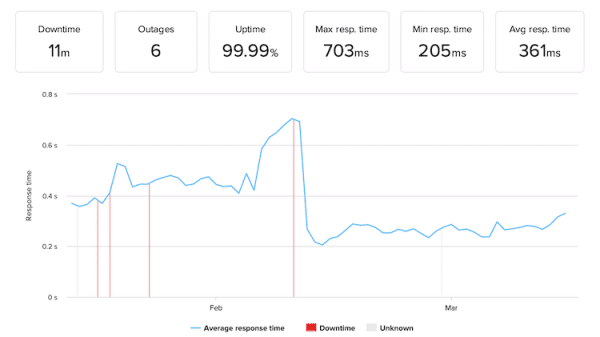SiteGround vs Bluehost. Are you having trouble choosing between SiteGround and Bluehost? Both well-known web hosting companies offer distinctive advantages of their own.
In this comparison, we look at user reviews, customer support, supplemental services and products, price, and the variety of hosting options to see how the two stand out. Discover which of these well-known services is perfect for your requirements by reading on to discover more about them.
SiteGround vs Bluehost
In this SiteGround vs Bluehost comparison, we’ll test both hosting companies to learn everything there is to know about them and determine which one is best for your website. We’ll discuss costs, usability, performance, security, and customer support.
Both Bluehost and SiteGround are well-known brands in the sector if there is one thing that can be said with certainty. But each of them appears to be there for a reason. Due to its simplicity of use, Bluehost is, in our view, the preferred option for newbies. On the other side, SiteGround frequently appeals to enterprises.
But we should also point out that WordPress focuses on and recommends Bluehost and SiteGround. That’s a significant recommendation, but we have a query: Does it imply that both of these services are reliable?
Let’s examine what makes Bluehost and SiteGround deserving of such a recommendation in our Bluehost vs. SiteGround comparison. Let’s also determine which of them can be trusted with your website.
Principal Parallels and Divergences
In the context of talking about Siteground vs Bluehost.
Both providers provide comparable hosting options, including shared web hosting, WordPress hosting, WooCommerce hosting, and cloud hosting. While SiteGround does not provide a free custom domain name, Bluehost furthermore offers dedicated hosting, VPS hosting, and a free custom domain name for the first year of use.
Additionally, each service provider provides its free content delivery network (CDN), free WordPress installation, and free website builders. Both companies now provide free domain-associated email addresses and have no bandwidth restrictions. Bluehost is the only hosting provider that offers a free business email account with your domain for all hosting plans.
Even though they may appear to be almost the same, each supplier offers additional, more particular characteristics that distinguish them.
These naturally concentrate on the usability and functionality consumers would expect from their hosting provider. However, let’s look at the usability first before getting into those specifics.
SiteGround vs Bluehost: Which Web Host is Superior?
SiteGround is a desirable alternative when comparing the features and categories of each web host, especially when it comes to speed, security, and customer care. Additionally, there are more options accessible that would interest a more experienced user.
But higher prices correspond to more features. Initiated at a discounted cost, new clients will automatically renew at the standard rate. The most basic plan from Bluehost costs $9.99 per month after the first discount, whilst the most basic plan from SiteGround costs $7.99 per month.
When you consider that SiteGround offers more and beats competitors in several web hosting categories, a higher price is warranted.
Speed of website
SiteGround is a definite winner in terms of speed. 872ms is the Largest Contentful Paint (LCP) time.
During this period, SiteGround loads your website’s essential components. Just a fraction of a second longer—1.1—and the loading circle truly comes to a standstill.
LCP is crucial in this case since it lets consumers and Google know whether the webpage is quick. A decent outcome is one of up to 2.5 seconds.
LCP for Bluehost is now at 1.8 seconds, and there is no further delay until the page is fully loaded.
Although Bluehost falls into the “good” category, there is less room for it to exit. However, very few websites manage to load in less than 1.8 seconds.
Overall, SiteGround outperforms Bluehost in terms of performance, although both services are adequate.
Furthermore, the fact that SiteGround is quicker than Bluehost is not surprising given that the latter employs antiquated technology.
Performance of Bluehost versus SiteGround
When comparing the performance of SiteGround vs Bluehost, it is evident that SiteGround places a greater emphasis on speed. While both providers had a 99.99% uptime reliability rate, SiteGround was faster at loading websites and had a greater sustained capacity for traffic.
Time to up and respond
SiteGround and Bluehost both achieved 99.99% uptime. SiteGround was watched for a few days less than two months than Bluehost, which was watched for a little more than two months.
SiteGround experienced 3 outages during this time, totaling 7 minutes of downtime. One of the nicest outcomes we’ve ever had, to be honest, was the reaction time, which averaged out at 217ms and was consistent.

Bluehost had 6 failures, resulting in 11 minutes of downtime. But the reaction time wasn’t consistent. Bluehost initially lagged with a maximum high of 703ms. Later, the speed steadied, and the provider’s average response time was 361 milliseconds.

Both services had outstanding uptime ratings overall. Nothing better can be expected. SiteGround, though, was a touch quicker.
As a general rule, though, a response time of up to 500ms is regarded as excellent. Commonly, shared hosting companies receive scores of approximately 600ms, placing SiteGround and Bluehost at the top of the field.
To sum up | SiteGround vs Bluehost
Although Bluehost is commonly recognized as being the option for beginners, SiteGround also has a top-notch customer service team and an easy interface with useful recommendations.
Even if you’re new to web hosting, SiteGround should work out nicely for you. In the end, your budget and the features you want from your hosting provider will determine which option is best for you.
Results of stress tests
We dispatched 50 bots to each website over 5 minutes to compare how each provider responds to a real-life situation in which tens of visitors browse across a page.
The test was conducted flawlessly by SiteGround. You can see that the blue line, which depicts speed, is largely motionless. even when an increasing number of guests (the gray line) join in.

Nevertheless, the blue and grey lines both rise, suggesting that the provider slowed slowly.
This is not a flawless outcome, and it demonstrates that Bluehost is less powerful than SiteGround in several ways.
Read more: How to Install WordPress in 5 Minute!


